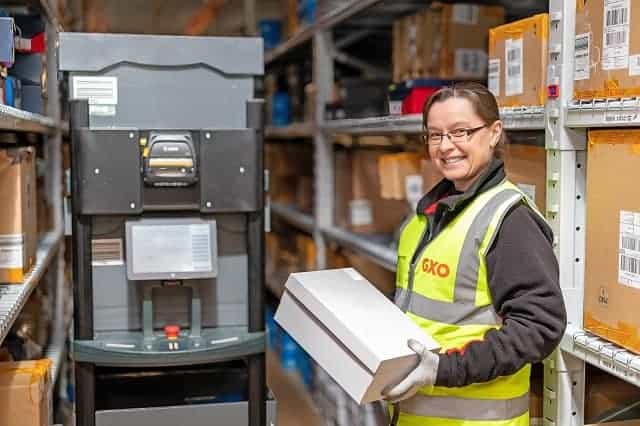With the burgeoning e-commerce industry, where virtually everything is available for purchase online, warehouses and distribution centers are handling an unprecedented volume and variety of products. The product turnover is high, and this causes faster deterioration of the racking system used in your warehouse. Some of the reasons to consider upgrading racking systems are:
- Requiring regular repairs
- Problems arising during inspections such as deterioration, dents or other damages
- Beam deflection that may occur due to insufficient arm support or heavy loads
- No room for expansion with the current racking system
- Relocation to a new facility
A warehouse racking system provides the framework for the complete operations of the warehouse. The limits of the racking system determine the warehouse’s capacity limit. The general convention is to conduct biannual checks to ensure the health of the racks and shelving. This is extremely important as racks in poor condition can pose safety risks to both the safety of employees and the integrity of the products stored on the racks. Fragile items that fall to the ground after a racking system or shelf fails can be damaged, and these losses impact the company’s bottom line. Warehouse racks must be upgraded in a timely fashion with future traffic and other requirements of the warehouse in mind.
Warehouse layout optimization

For finding the best possible configuration for a warehouse and the optimal use of space, you need to optimize your warehouse layout. For maximum space utilization and improved efficiency, you need to have constant and complete visibility into storage locations with the ability to pinpoint where specific products are stored within the warehouse at any time. Designing an efficient warehouse layout will increase picking efficiency, reduce picking errors and reduce the time required to fulfill orders. Warehouse layout optimization also helps to identify the best suitable racking solution for the warehouse space.
Inventory retrieval system
When upgrading the racking system, consider the products stored in different areas and racking systems and how products are retrieved from pick locations. Some inventory management processes follow LIFO (Last In, First Out) or FIFO (First In, First Out) systems. In general, when perishable goods are stored in a warehouse’s inventory, the FIFO inventory system is employed. Regardless of the inventory management method your company utilizes, the racking system must support the retrieval system.
If any machinery is used to retrieve products from the rack, it also must be considered while selecting a racking system. Racks from which products are picked by a human and those from which products are picked using machinery like forklifts need to have different access considerations. Picking methods and any equipment used in the picking process should be accounted for when selecting a racking system. If warehouse automation is implemented or will be in the future, the new racking system must be compatible with the automation system. Flexible automation solutions like collaborative mobile robots integrate with your existing infrastructure, making them an ideal automation solution for many warehouses.
Warehouse environment and structure
While it is ideal to build a warehouse tailored for the requirements, it is not always cost-efficient to do so. Most often you have to work within the constraints of the available space. The temperature conditions, humidity and available HVAC systems play a role in determining the most suitable racks to implement. Other structural considerations include column spacing, ceiling height, location of loading ramps, total space available and required space. Specialized warehouses, such as cold storage warehouses, will have their own set of specifications that must be considered when selecting a racking system.
Update ancillary equipment

Along with updating the racking system, you need to update other warehouse infrastructure. The existing lighting conditions might be disrupted with a different racking system, so lighting updates may be necessary to accommodate the changes. Compared to incandescent lighting, LED lighting uses as much as 75% less energy and lasts up to 25 times longer, according to the U.S. Department of Energy. A new lighting system will improve safety and decrease accident rates. Improved lighting can also help reduce picking errors.
With new racks, there may also be a need for new scanning equipment. With increased rack heights, aisles, and other space considerations for operators and equipment, the warehouse’s existing technology may not meet the new scanning requirements. Modern scanning technology can scan up to 40 feet and can be operated from a forklift or other equipment. Long-range scanning solutions that don’t require equipment operators to stop and exit their vehicles means they’ll spend less time finding the correct storage locations.
Plan for expansion
The demand for warehousing solutions is expected to grow in the coming years with the continued growth of the e-commerce industry. According to the North America Warehousing and Storage Market: Industry Trends, Share, Size, Growth, Opportunity and Forecast 2019-2024 report from Research and Markets, the warehousing market is expected to grow at a CAGR of 3% through 2024, reaching a value of $86.41 billion.
Current plans to upgrade should also account for potential future expansion of physical space, the introduction of new technology, diversification of products handled, automation roadmap, etc. Potential upgrades should be considered with discussions with other departments of the company and industry experts.
Budget considerations
Warehouses are a support structure for the sale of products, and in the end, storage and fulfillment costs must be low enough for the company to make a profit when products are sold. So, updates to the warehouse racking system and other upgrades need to be within a justifiable budget. Warehousing and storage costs, like product pricing, are a function of supply and demand. Such cost considerations must be accounted for while upgrading the racking system, so it’s necessary to bring the finance department on board for discussions related to infrastructure investments like updating the warehouse racking system.
Following these best practices for upgrading your warehouse racking system will ensure that you choose the best racking system to meet your specifications. The right racking system helps to improve safety and efficiency while also minimizing costs.
When upgrading your warehouse racking system and ancillary equipment, consider a flexible automation solution like collaborative mobile robots. Download our white paper, The Business Case for Collaborative Mobile Robotics, to learn more about how collaborative robots can transform your fulfillment operations with the flexibility to meet demand and reduce costs.


